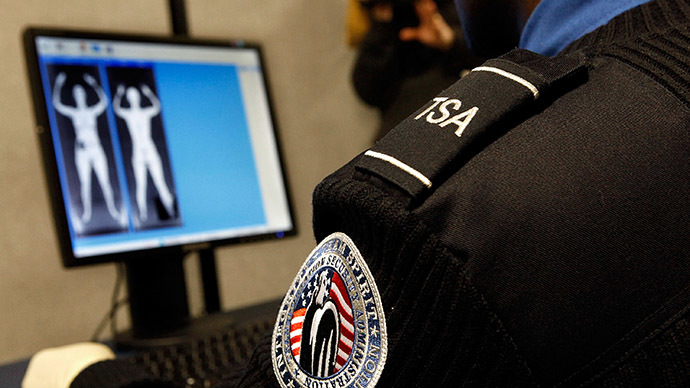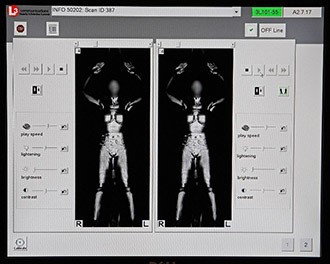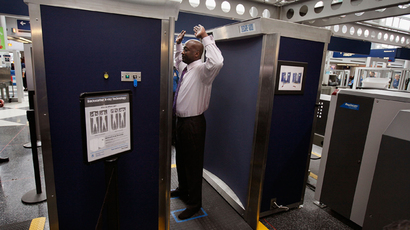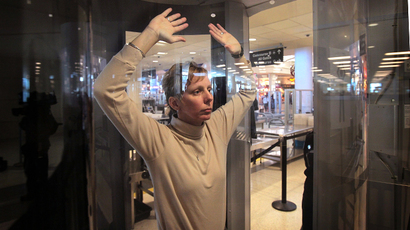Researchers: Tests show TSA 'naked' body scanners can be easily fooled

Weapons are easily smuggled through so-called naked body scanners, according to new research released Thursday. The devices are no longer used at airports in the United States but remain in other government facilities worldwide.
The Rapiscan Secure 1000 Single Post "backscatter" scanner - called the “naked scanner” by critics because of the images it produced of those inside - cannot detect a weapon hidden on the side of one’s body, according to the team of researchers from the University of California-San Diego, University of Michigan, and Johns Hopkins University.
“We performed several trials to test different placement and attachment strategies. In the end, we achieved excellent results with two approaches: carefully affixing the pistol to the outside of the leg just above the knee using tape, and sewing it inside the pant leg near the same location. … In each case, the pistol is invisible against the dark background, and the attachment method leaves no other indication of the weapon’s presence.”
In 2012 a Florida man, Jonathan Corbett, filmed himself successfully passing through the backscatters with metal at two different US airports using the same method. At the time, the TSA responded to Corbett’s efforts saying the “machines are safe.”
Corbett, who is now suing the TSA over the backscatters, has encouraged those who did not believe him to “try it.”

The researchers - who presented their findings on Thursday at Usenix Security Symposium in San Diego - took the challenge, buying a backscatter on eBay for $49,500.
"What does this say about how these scanners were tested and acquired in the first place?" asked one of the study's authors, J. Alex Halderman. "It says there’s something wrong with the government’s process.”
The report said the explosive C-4 and human flesh appear the same on a backscatter.
“These scans indicate that plastic explosives can be smuggled through a Secure 1000 screening, since thin pancakes of these materials do not contrast strongly with flesh. While a metal detector would have been sufficient to detect the detonator we used, not all detonators have significant metal components.”
The backscatters were removed from US airports by June 1, 2013, according to the Transportation Security Administration, and replaced with less invasive body scanners.
Yet backscatters are still used at US prisons and courthouses, as well as airports in Africa.
New scanners used by the TSA in US airports deploy radio waves to search for objects and then display the results in a generic human outline rather than a nude image.
One former TSA employee said earlier this year the federal agency was aware, even before they were introduced, that the backscatter scanners were flawed.
“Officers discovered that the machines were good at detecting just about everything besides cleverly hidden explosives and guns," said Jason Edward Harrington. "The only thing more absurd how how poorly the full-body scanners performed was the incredible amount of time the machines wasted for everyone.”
The TSA and manufacturer Rapiscan were given advance copies of the university report. L-3 Communications was the company that assumed the scanner contract, as it was able to meet the TSA’s software requirements that called for imaging that did not show a nude image of travelers passing through security.













